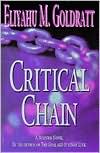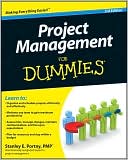SAP Project System Handbook
Centralize and Control Enterprise Project Management\ Plan, execute, and track projects across the entire lifecycle using SAP Project System (PS) and the in-depth information contained in this comprehensive volume. SAP Project System Handbook explains how to configure PS for optimal performance, design structures and networks, create project blueprints, generate cost estimates and materials demands, and use the latest SAP tools. You will find full details on scheduling work, automating and...
Search in google:
Centralize and Control Enterprise Project ManagementPlan, execute, and track projects across the entire lifecycle using SAP Project System (PS) and the in-depth information contained in this comprehensive volume. SAP Project System Handbook explains how to configure PS for optimal performance, design structures and networks, create project blueprints, generate cost estimates and materials demands, and use the latest SAP tools. You will find full details on scheduling work, automating and tracking billing and POs, triggering events, and integrating with most other SAP modules. An invaluable reference to PS transaction codes is also included. Configure and customize SAP Project SystemBuild PS objects, networks, and Work Breakdown StructuresUse customer and service projects to track sales and billingUnderstand Assembly Processing conceptsCreate integrated cost, settlement, and resource plansDevelop financial, workforce, and materials management blueprints Perform resource-related billing using Dynamic Item Processor ProfilesSimulate and automatically generate sales documents, POs, and quotationsManage corporate investments with IM structures and AUCsConstruct timesaving Project, Network, and Milestone TemplatesExtend functionality with the Project Builder, Planning Board, and ProMan
Acknowledgments xiIntroduction 1Project System: An Overview of PS 1From Start to Finish 2Organization 2Integration 4Summary 5Scenarios 7A Typical Scenario 7A Typical Working Scenario 7Elements in the Scenario 8Summary 23Methods and Styles 25Ways of Using PS 25Asset Projects 25Customer Projects 30Service Project 33Working with Materials 33Working with CRM 35Summary 36Features of Project System 37Structural Elements 38Coding Masks: How Project Numbers Are Coded 39Project Profiles: How a Project Should Behave-What It's Allowed to Do 39Project Definition: What a Project's Defaults Are 40WBS (Work Breakdown Structure) Elements: The Hierarchical Structure 40Templates: How a Project Should Look 41Milestones: Things a Project Must Remember to Do 41Networks (Part 1): How to Carry Out Tasks in aSpecific Way, Order, and Time Period 42Networks (Part 2): What Materials and Resources Are Needed to Carry Out a Task 42Networks (Part 3): Internal Activities-Planning Internal Resources 43Networks (Part 4): External Activities-Planning External Resources 43Networks (Part 5): General Cost Activities-Planning Unspecified Costs 44Networks (Part 6): Material Components-Planning Materials 44Internal Orders: Objects that Can Be Assigned to a Project Structure 44Attachments and PS Text: Attachments to the Project Structure 45Cost and Resource Planning 45Structure Cost Planning via WBS: Direct Entry of Costs Against a WBS Structure, Without Regard to Cost Elements 46Detailed Cost Planning via WBS: Planning Costs Against a WBS at Cost Element Level 46Detailed Cost Planning via Network: Planning Costs Against a Network Activity Using Cost Elements, Materials, Services, or Activity Types 46Easy Cost Planning via WBS: Planning Costs Against a WBS via Unit Costing, but with the Use of Cost Models to Make Data Entry Simpler 47Plan Versions: Distinct Repositories for Keeping Your Planned Costs Separate 47Statistical Key Figures: Objects Used for Storing and Planning Invisible Costs or Consumption 48Overheads (CO): Additional Costs Calculated via Costing Sheets 48Value Categories: Giving Meaning to Values 48Budgeting 49Budgeting in Projects: When the Budget Is Controlled from Within a Project 49Budgeting in Investment Programs: When the Budget for All Projects Is Controlled by a Capital Investment Program 50Availability Control: When You Need to Control Expenditure 50Time and Capacity Planning 51Dates in WBS: Managing Basic and Forecast Dates 51Scheduling in Networks (Part 1): Managing Start/Finish Rules and Executing Scheduling 51Scheduling in Networks (Part 2): Managing Start/Finish Rules and Executing Scheduling 52Work Centers and Activity Types: Planning Capacities and the Cost of Utilizing the Resource 52Workforce Planning: Planning Who Does What, and When 53Revenue Planning 53Structure Revenue Planning: Direct Entry of Revenue Against a WBS Structure, Without Regard to Revenue Elements 54Detailed Revenue Planning: Planning Revenue Against a WBS by Revenue Element 54Sales Orders (SD): Revenue Planning via Sales Order (or Quotation) 54Execution 55Status Management: Setting Project Restrictions (Business Processes) by Status 55Actuals: Posting Actual Costs, Revenues, and Dates to a Project 56Simulations: Simulating What You Want to Do Before You Really Do It, Without Committing 56Project Versions: Snapshots of a Project for Comparison Purposes 57Period-End (and Regular Processes) 57Settlement: Transferring Actual Values to the "Owner" 57Period-End: Executing Regular, Cyclical Processes 58Progress (Part 1): Updating and Reviewing a Project's Progress 58Progress (Part 2): Updating and Reviewing a Project's Progress 59Archiving: Taking Your Projects out of the Live System 59Billing: Sending the Customer an Invoice 60Summary 60Configuration 61The IMG and Customization 61Structures 65Coding the WBS 66Status Management 69Project Profile 79Networks 92Milestones 115Field Selections 120Validation/Substitution 124Documents 127PS Text 128Costs 129Planned Costs 130Dates 165WBS Scheduling 166Network Scheduling 169Material 175Procurement 176Summary 184Tools 185The Project Builder 185Project Builder Structure 185Project Builder Icons 186Project Builder Menus 188Inside the Project Builder 195The Planning Board 210Planning Board Icons 211ProMan (Project-Oriented Procurement) 213Exceptions 214Using ProMan 214Standard Reporting 216Summary 223Technical Information 225Transaction Codes 225CJ and CN Sorted by Code 226CJ and CN Sorted by Description 235Tables 244General Tables 244Table Fields 246Logical Databases 253The Complete IMG 256Summary 271Tips and Tricks 273Design Tips 273Projects with Sales Documents 273Classes and Characteristics 275Object Dependencies 276Validations and Substitutions 277Project Progress 278Progress Analysis 278Other Useful Information 285Known Limitations 286Summary 286Index 287
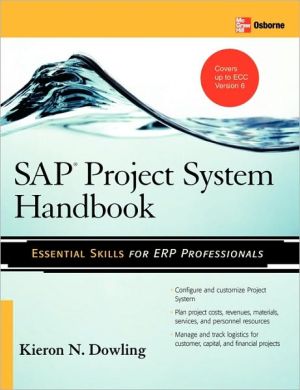
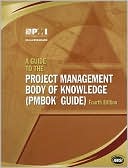
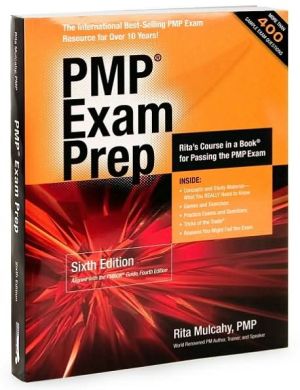

![Microsoft Office Project 2007 Step by Step [With CDROM] Microsoft Office Project 2007 Step by Step [With CDROM]](/application/data/covers/30/57/9780735623057.jpg)
